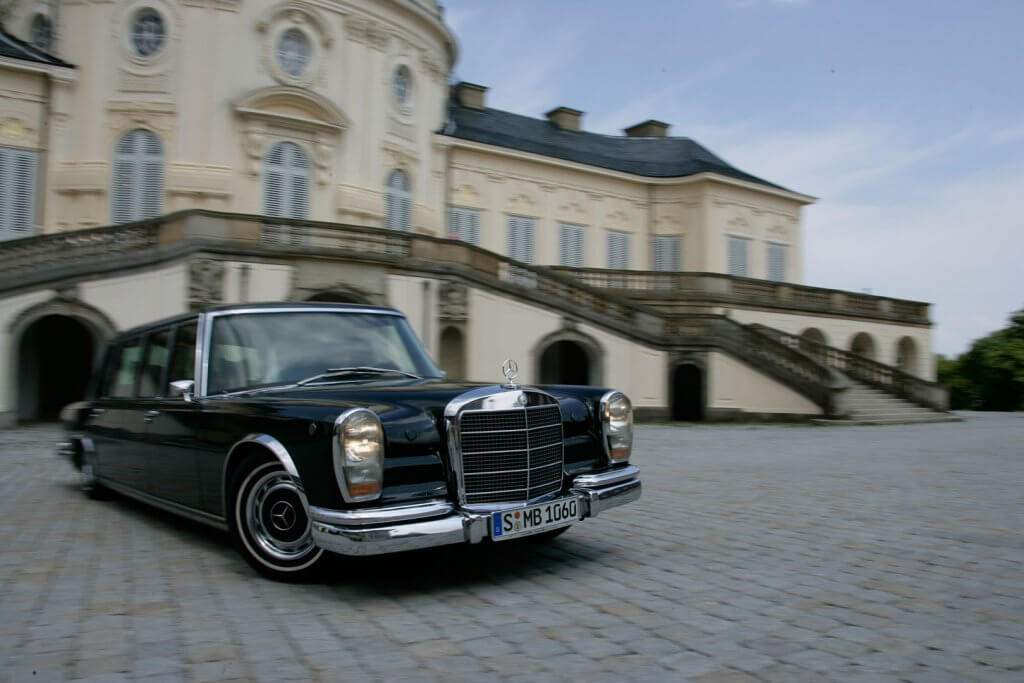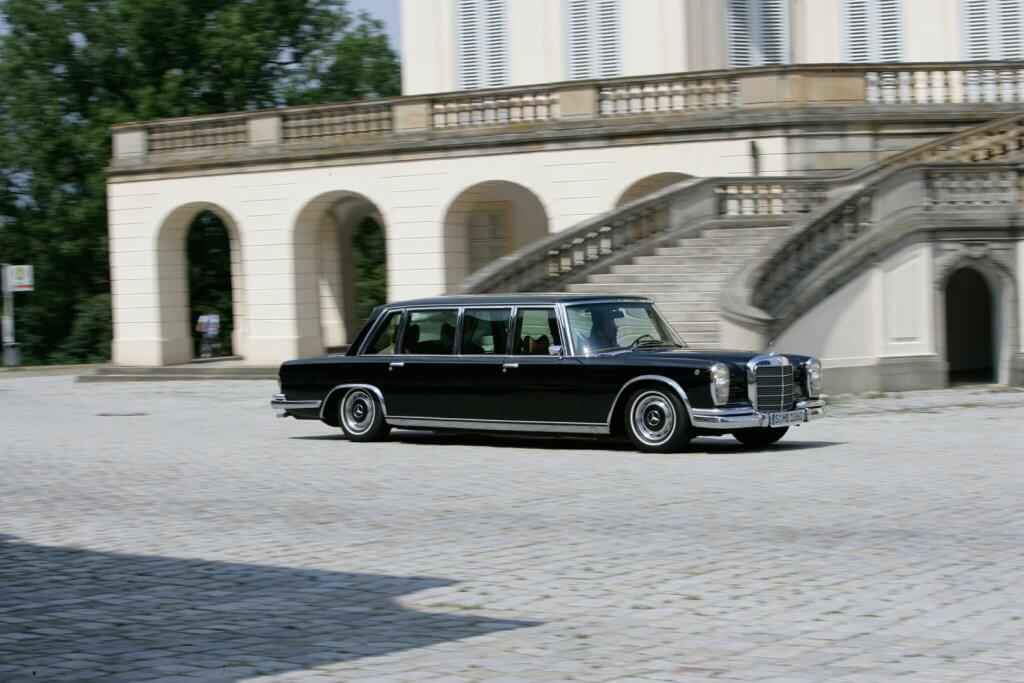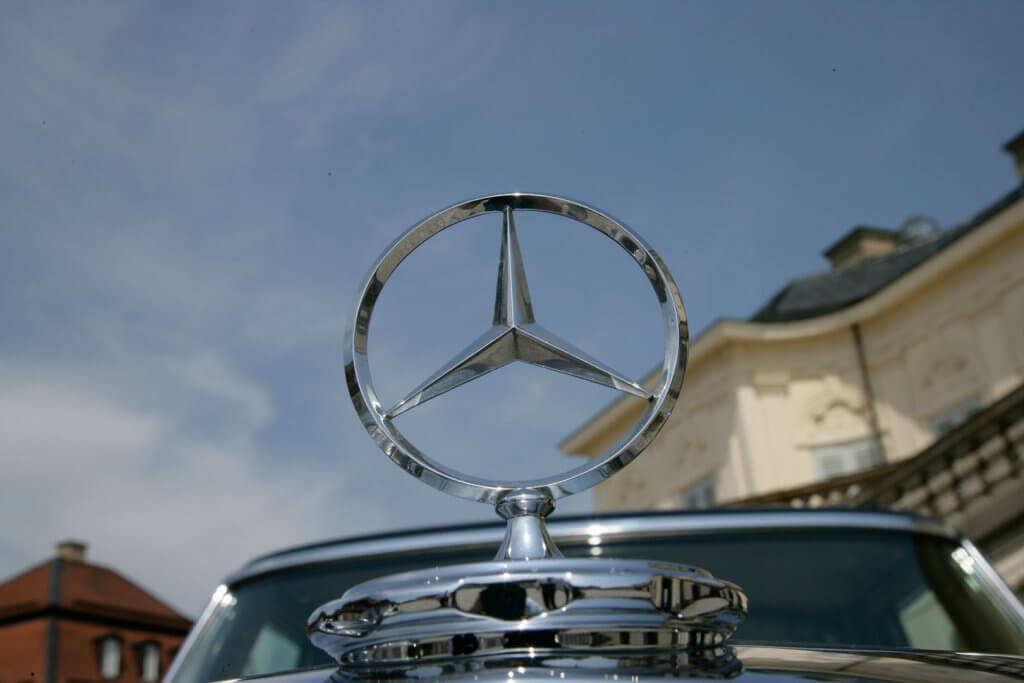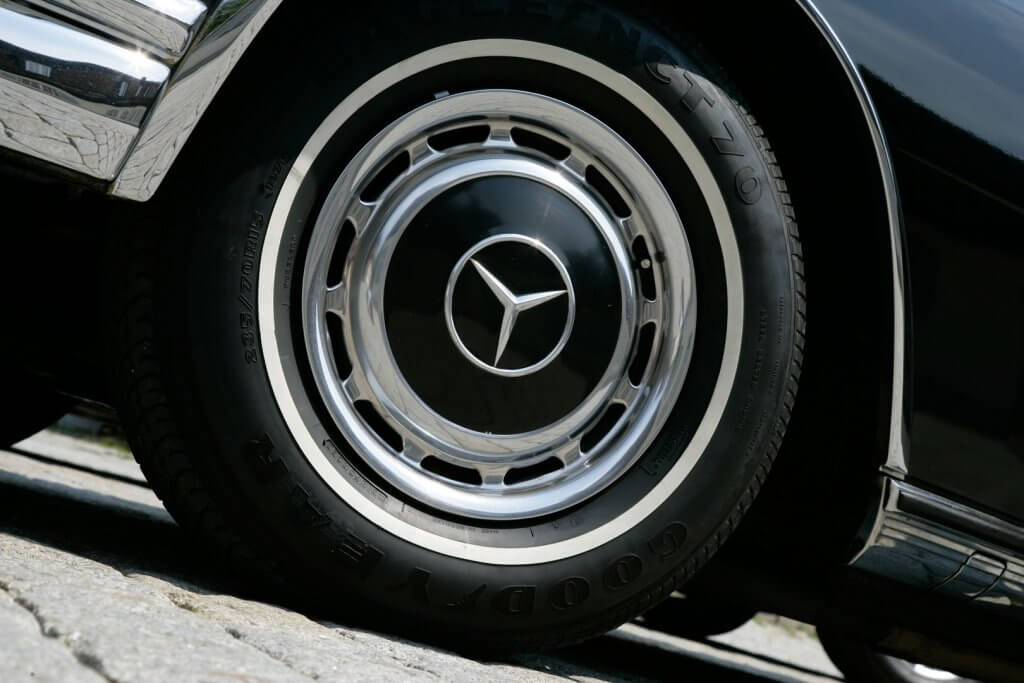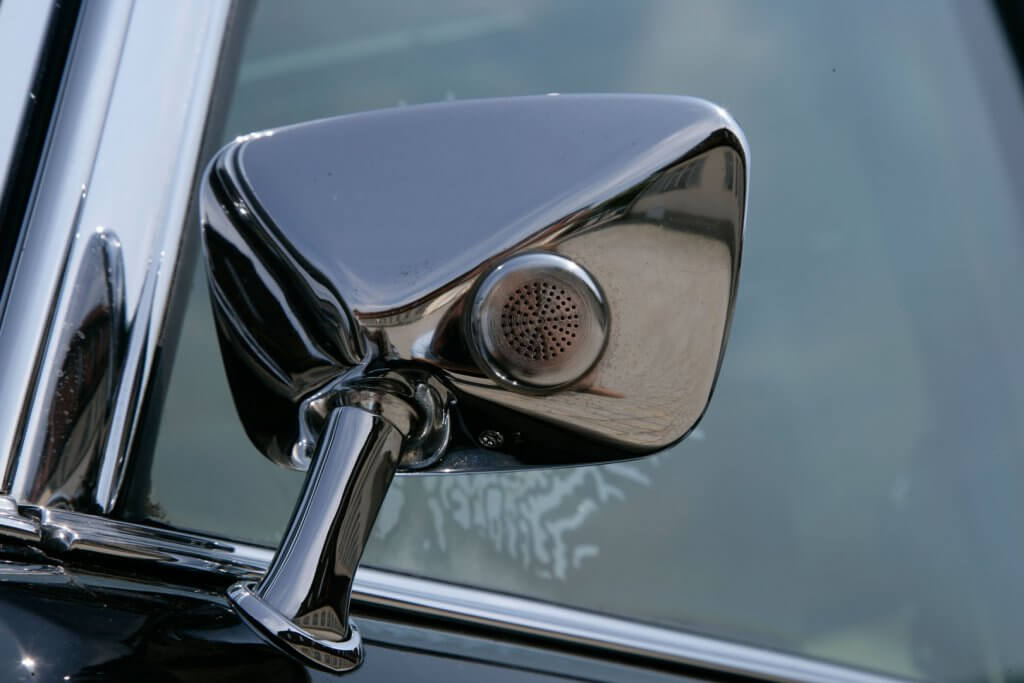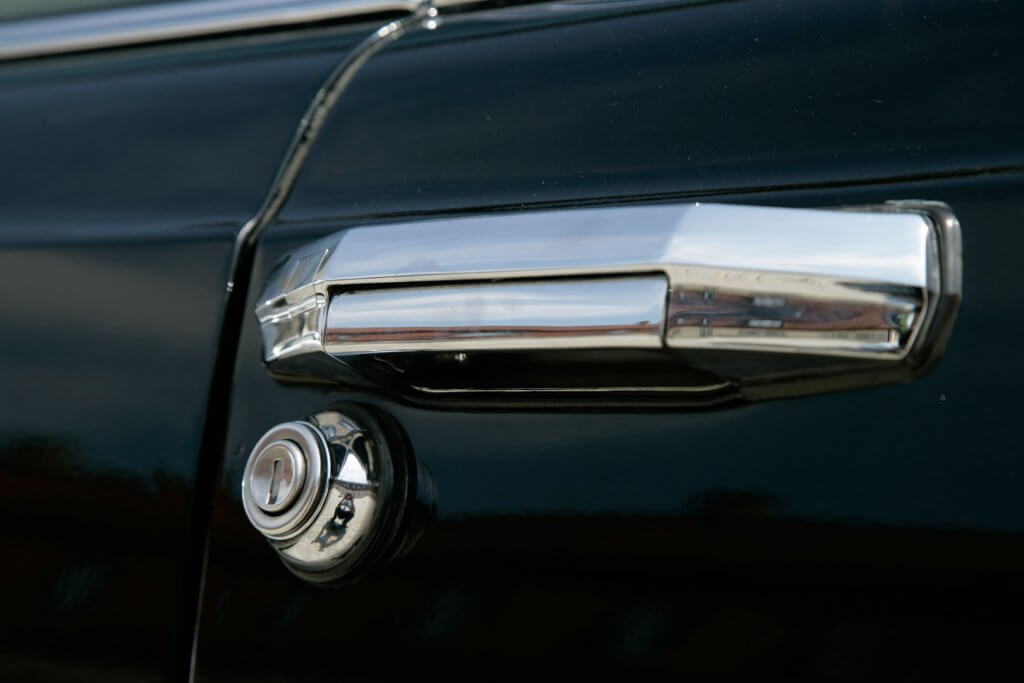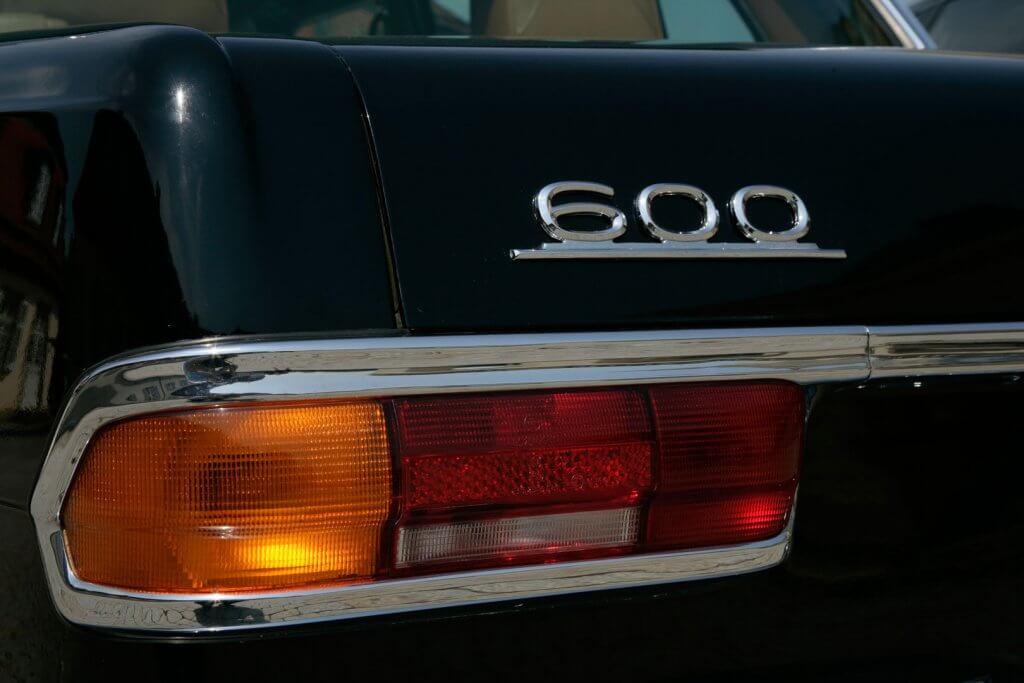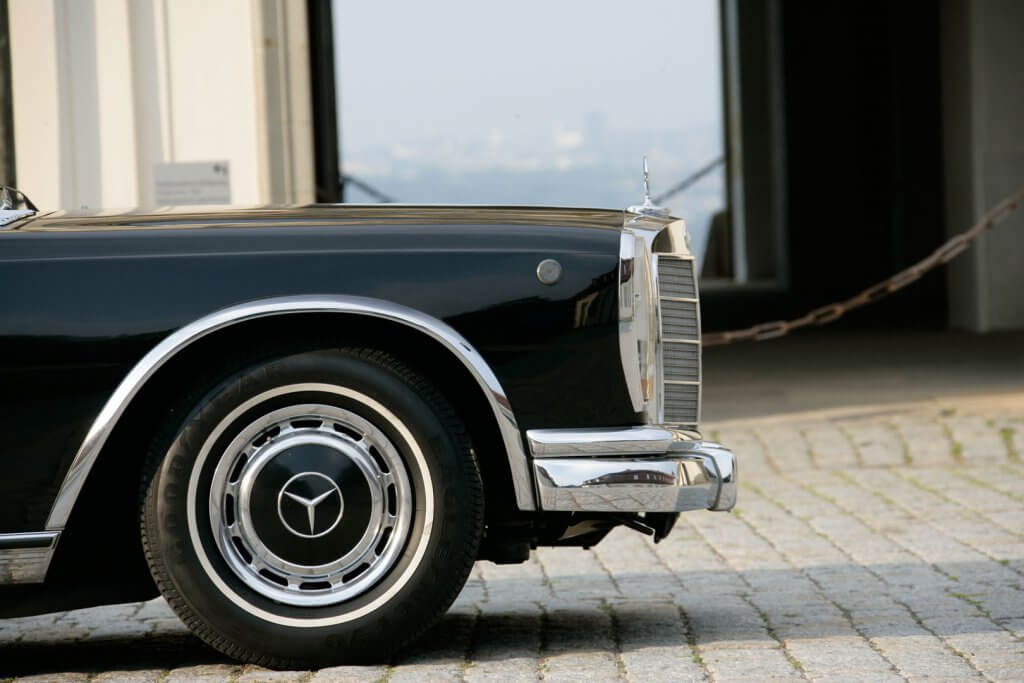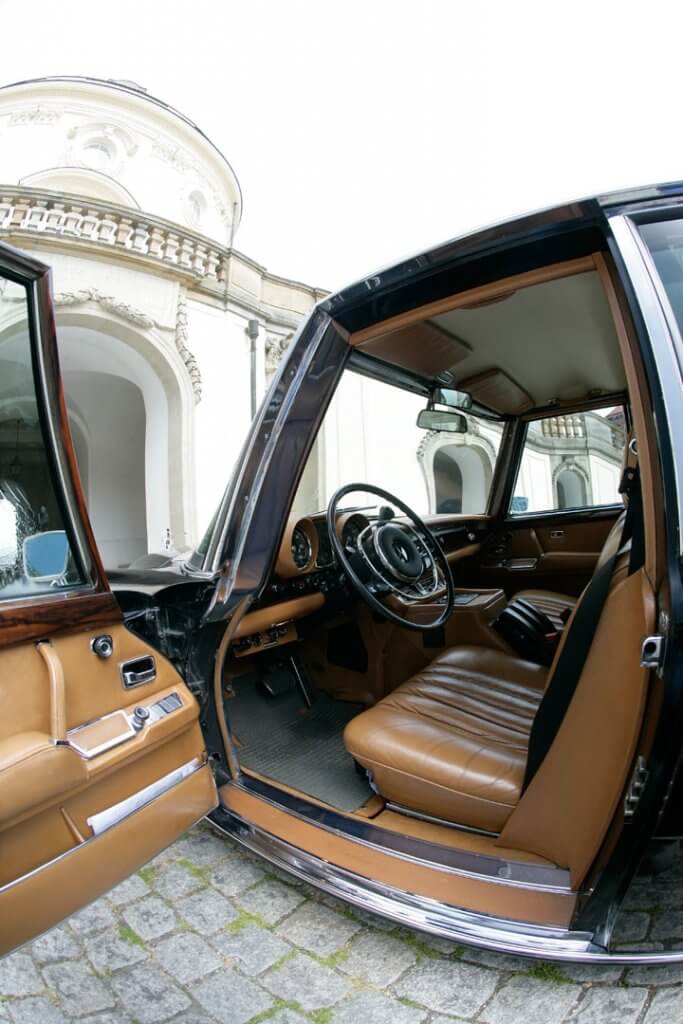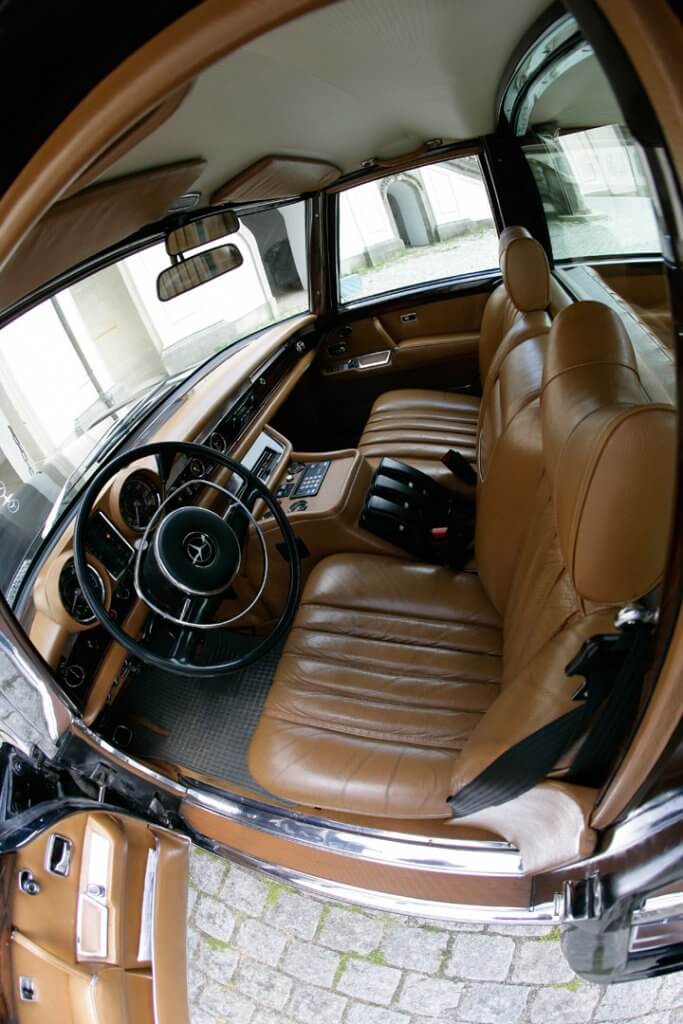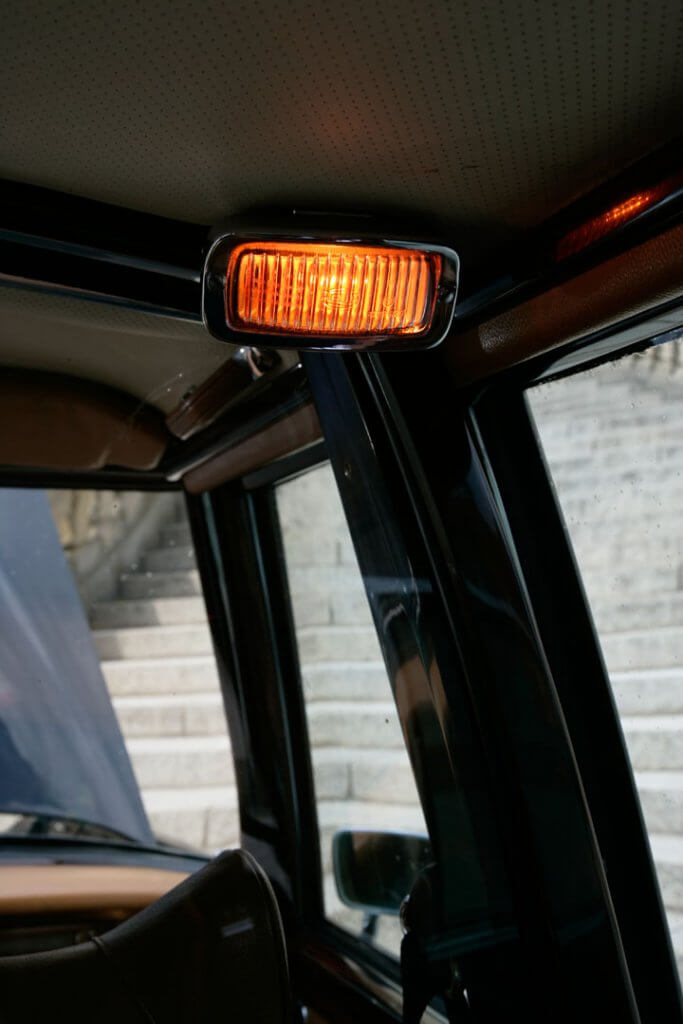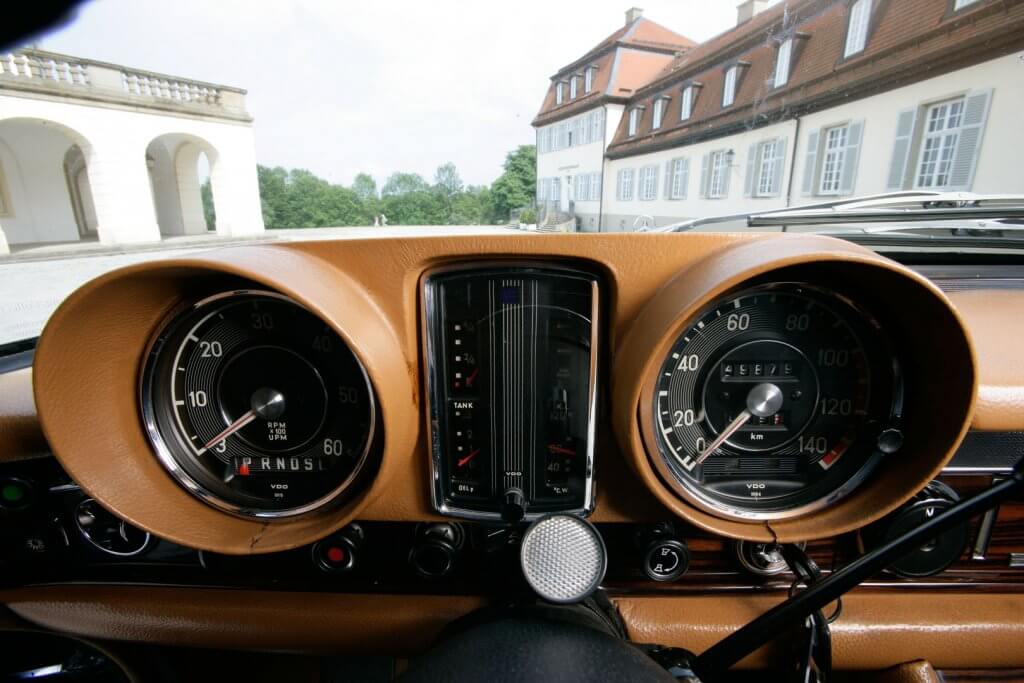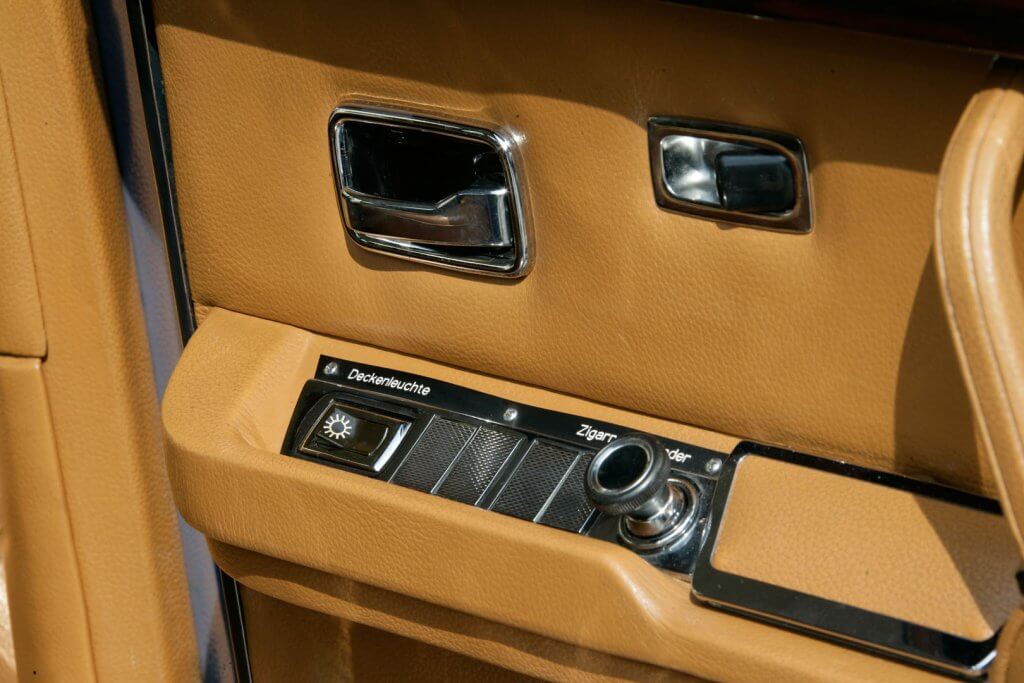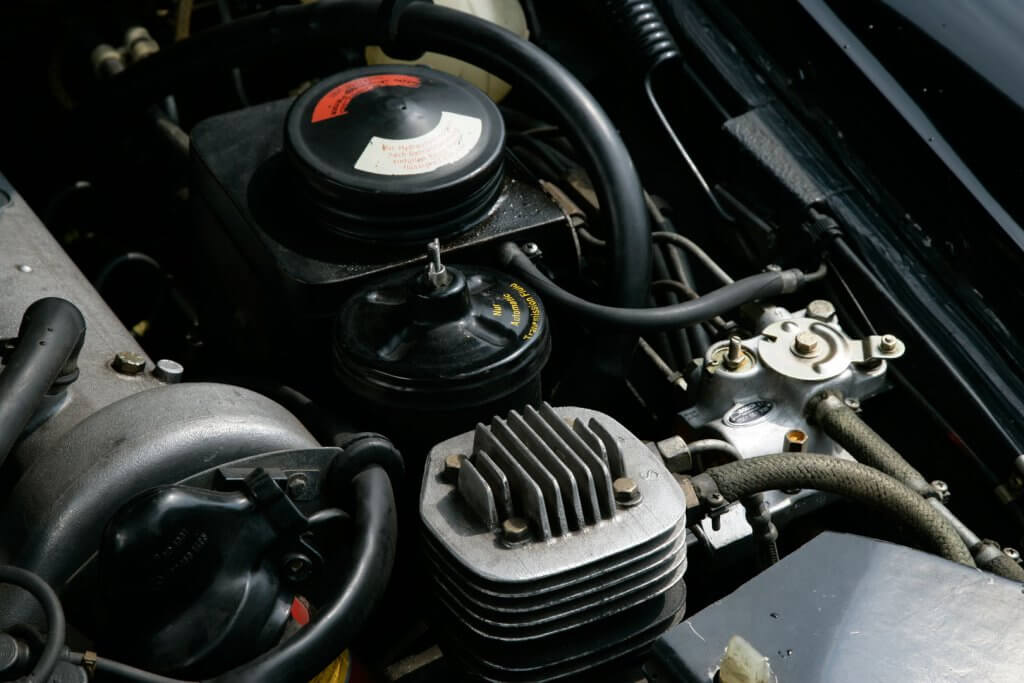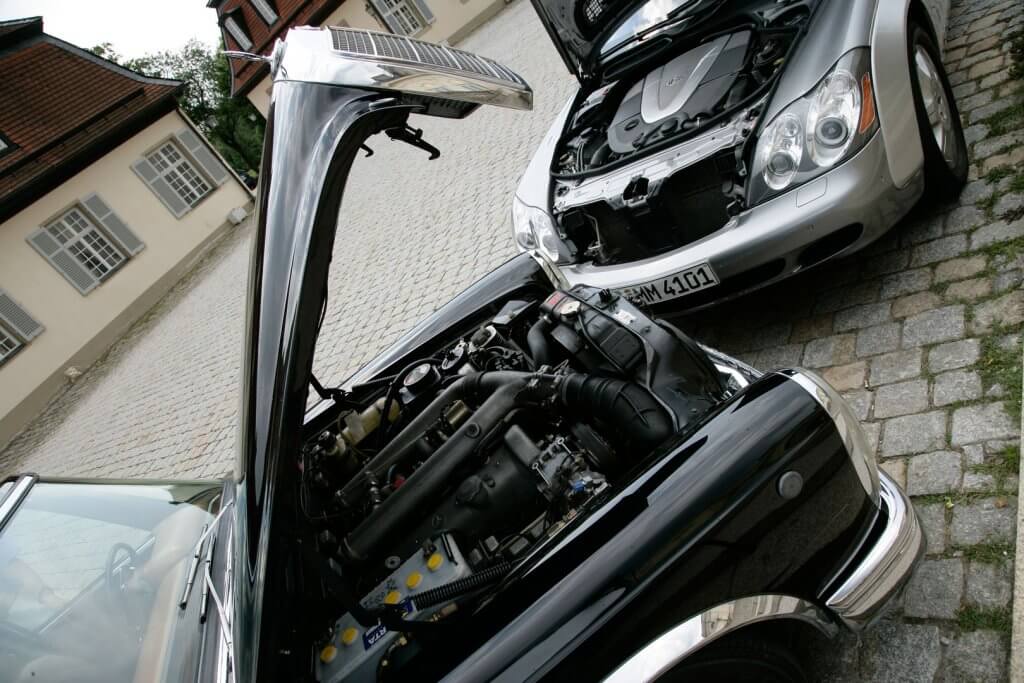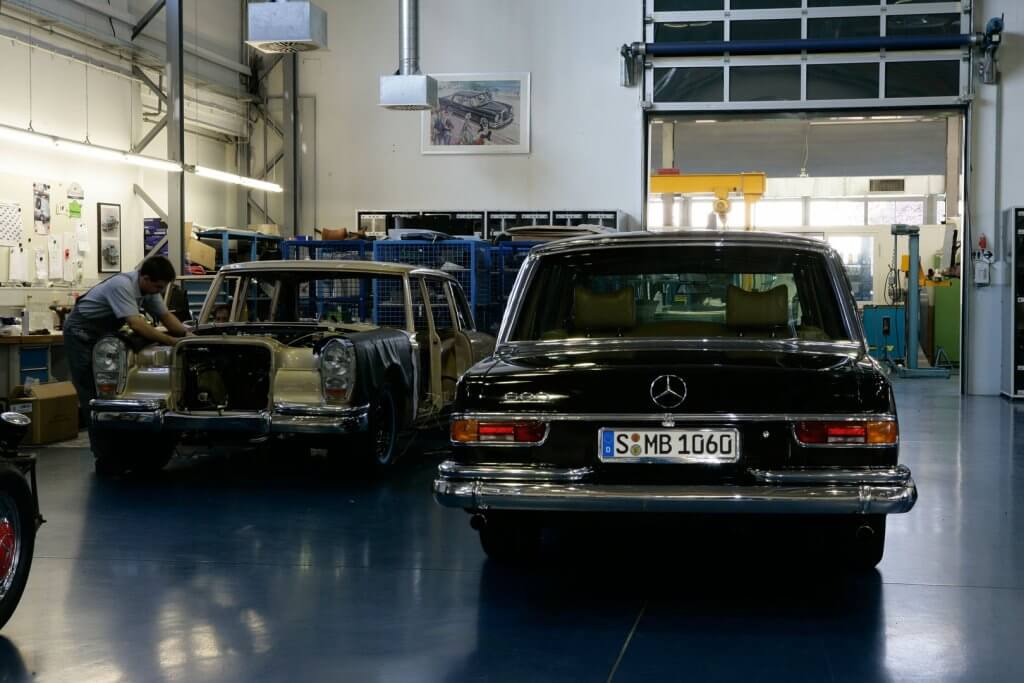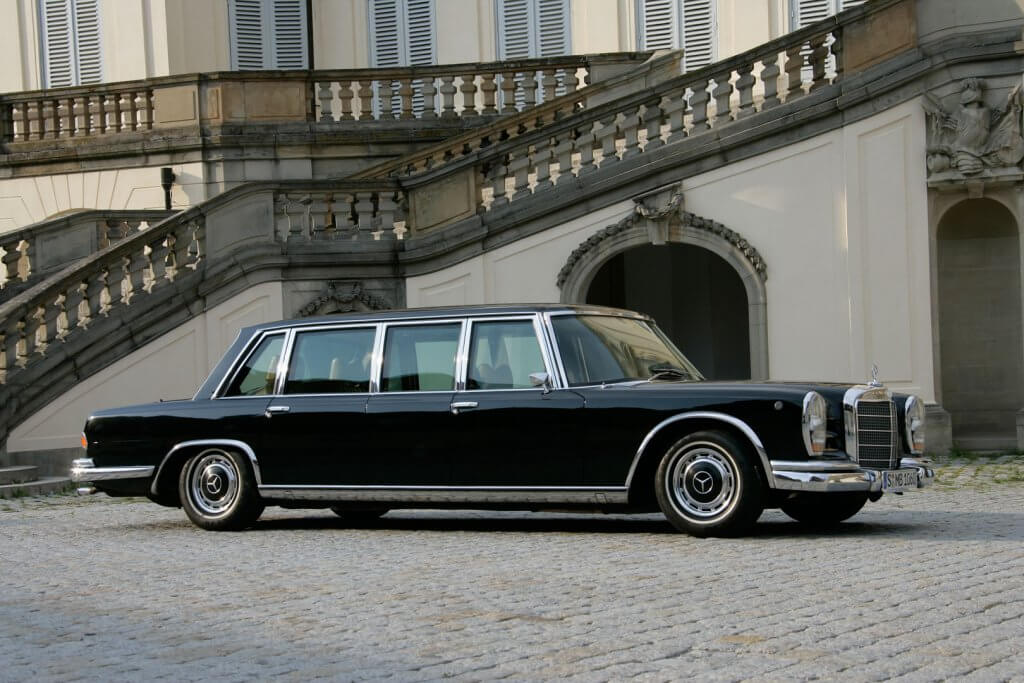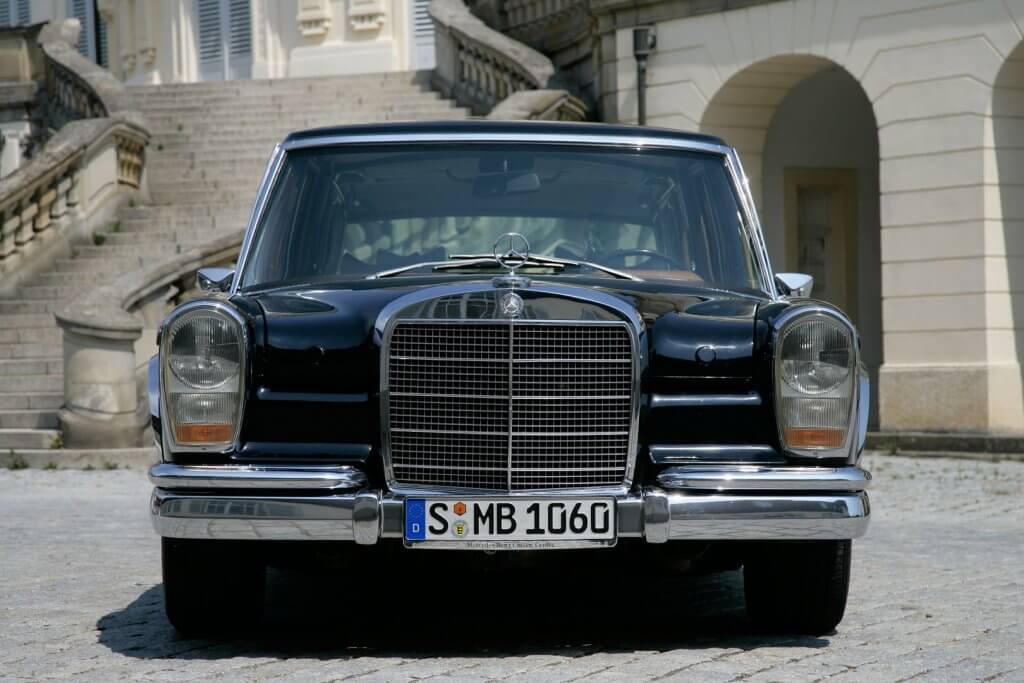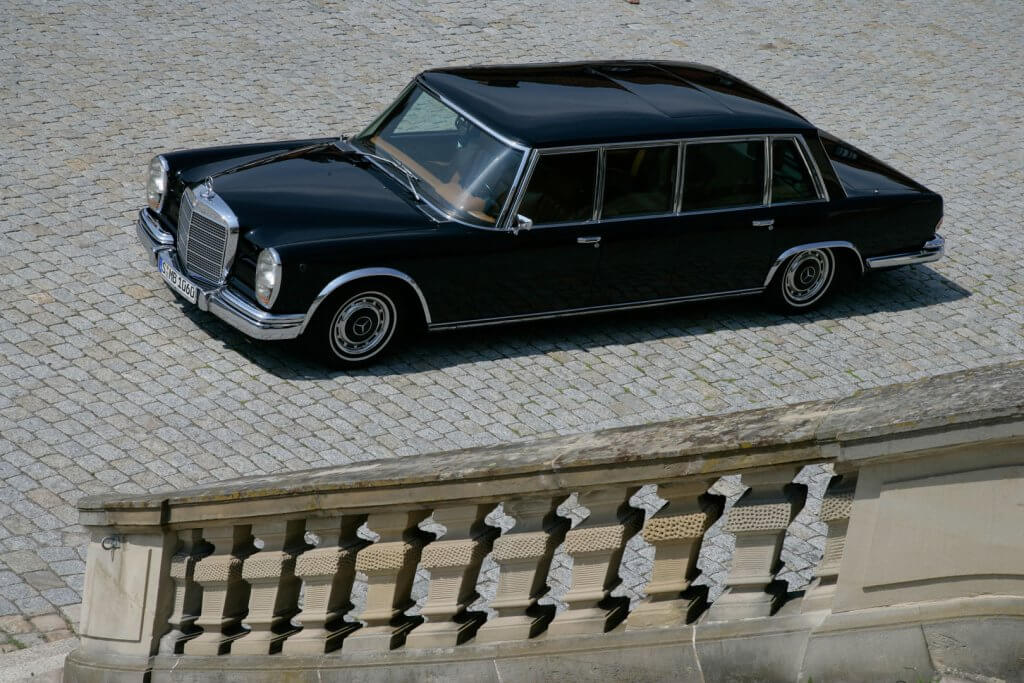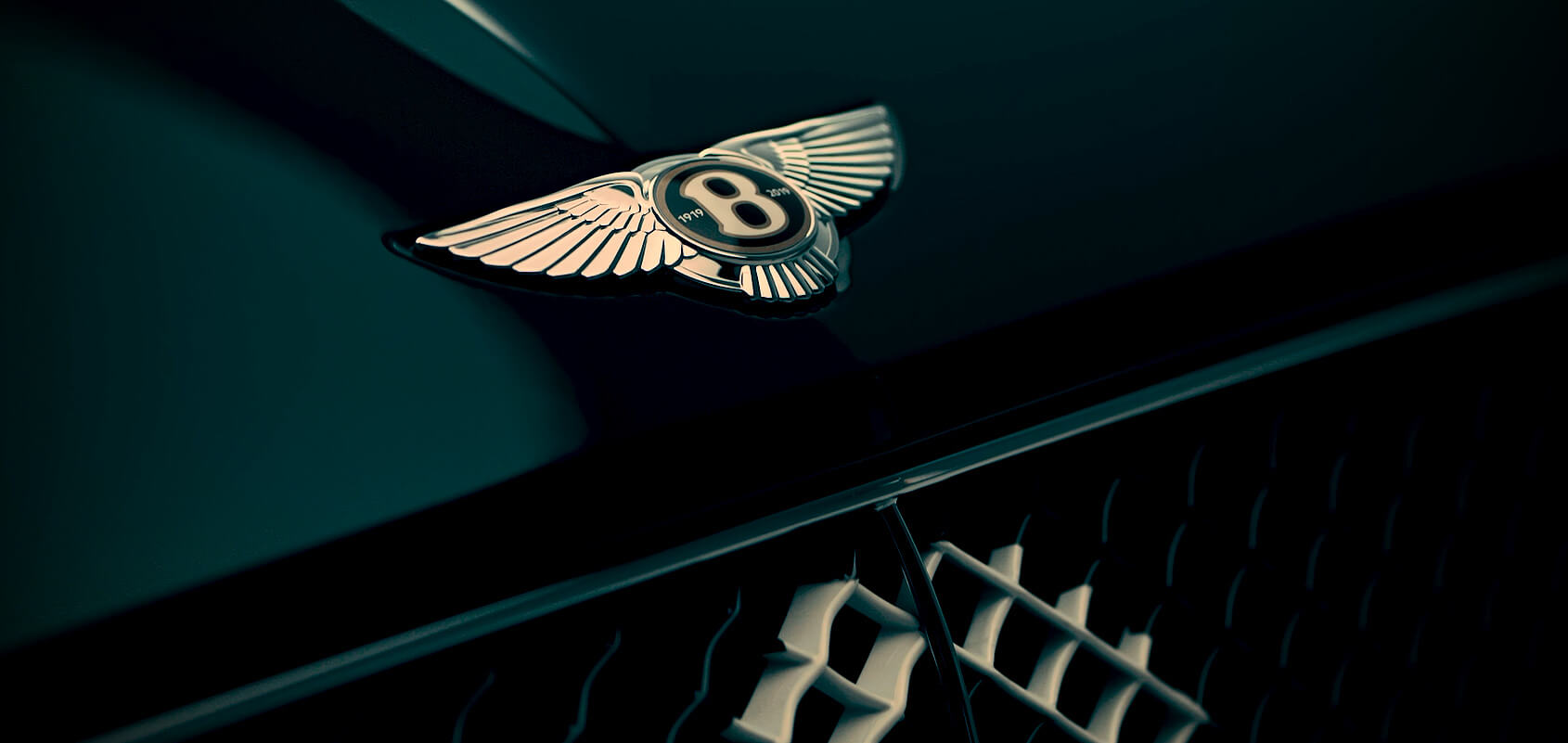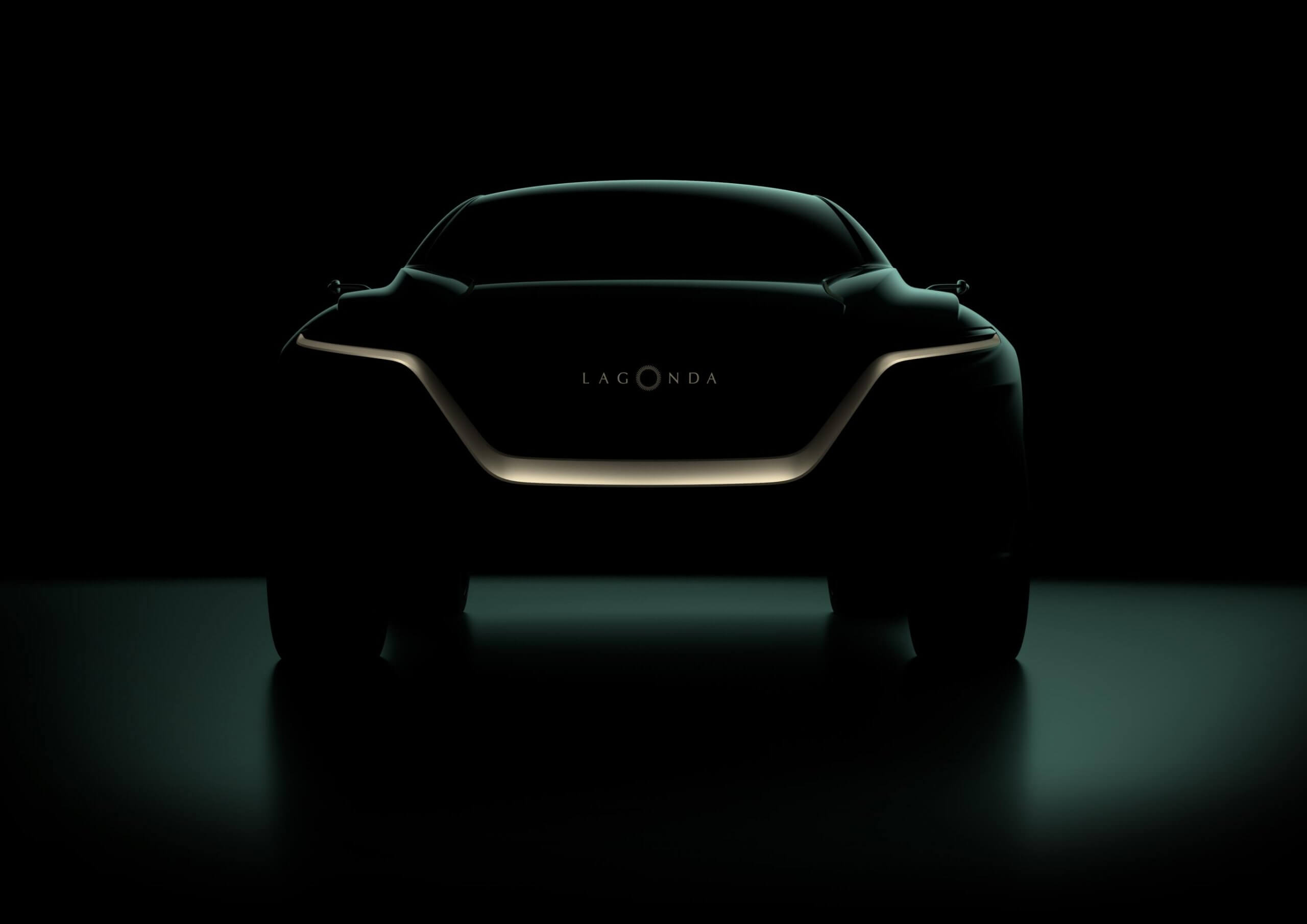In terms of performance, the heavy 600 was no slouch, it reached a maximum speed of around 205 kph, and did the 0-100 kph sprint in less than 10 seconds (for comparison: the 1964 model Porsche 911 did it in 8 seconds…). The first Pullman I ever drove, however, was much slower than that. It happened on a gloomy day in Germany. I came to Fellbach by taxicab to pick up my ride. When I walked in I was shown a stripped out W100, ready for restoration work, and a refurbished M100 engine, so I could understand better what I was dealing with. Then I was handed a key. A single, well-worn and battered key with a piece of cardboard attached to it with a piece of string. On the cardboard I found a note: “Mr. Frankowski, the air suspension on the car is broken, please don’t drive it sideways.”
Indeed the air suspension was not functional (normally it provided three positions, low, high and lock for changing a wheel or for transport), and I was lucky they had let me have the car at all. It was THE single W100 Sonderschutz prototype from 1965, aka The Werkspanzer, which had been leased to the West German government for several decades but remained in Mercedes-Benz ownership throughout. During its 30 years of service, it had covered around 50,000 km, carrying such Chancellors as Willy Brandt and Helmut Schmidt, and reputedly also such visiting dignitaries as the Soviet leader, Leonid Brezhnev. The car, which weighed in at 5.5 tons empty, had additional torsion bars fitted in the suspension to carry the armored body with its full B7-grade protection. Its specially designed Fulda tires (their size for nerds: 9.00 H 15 8/10 PR) could not handle speeds higher than around 100 kph, but it had spent most of its life between Bonn, the then capital of West Germany, and the government residence in Petersberg, close to Bonn, where foreign dignitaries stayed overnight, including Brezhnev, who crashed the SL Mercedes given to him as a present on the access road, while completely drunk, against a tree.
I touched the gloss black body with reverence. It wore its scars of service with pride. The multilayer bulletproof windows were splitting at the edges, but luckily I was not going to be shot at, or so I hoped. I had a rendez-vous with Dieter, the intrepid photographer, at Solitude Castle, and was going to drive myself there in the “Factory Tank”, which is a good linguistic approximation of the meaning of “Werkspanzer”. Holding tight onto a paper map, I squeezed myself into the front compartment. Since the bulletproof partition prevents the driver’s seat from sliding back, it is obvious that German chancellors must have been driven by overgrown midgets with huge torsos and very short legs. No matter. Feeling exactly the same as I had felt on my many trips to Asia in Economy Class, I started the engine and drove off. The steering, normally quite light in a Pullman, was heavy, due to the extra mass pushing down on the front wheels.
The ride comfort, however, was incredible, even without the air suspension fully functional. But the best effect of all was the one the massive black car had on other drivers in their small cars in all the villages I had to pass on my way out of Stuttgart: some of them instinctively stopped, even though the light for them was a solid green. It was stunning, I had never before felt so much like an impostor. Not knowing the correct route, I meandered through some wrong turns (the turning circle is huge), until I found the series of tight corners leading uphill to Schloss Solitude, actually a part of the old Solitude Rennen temporary racetrack. The big Merc went around the hairpin with fantastic precision, albeit this was the most intimidating part of my drive. It felt good, however, to push 5.5 tons of German metal up that hill at a brisk pace.
Having arrived and letting Dieter do his magic I had more time to look over the car carefully. The driver had absolutely no comfort to speak of, and he could talk to his passengers via a special interphone. There was also a PA system necessary to talk to people outside the car (lowering windows in an armored car to talk to strangers is really stupid…), with loudspeakers concealed in the engine compartment and microphones in the outside rearview mirrors. Another very neat touch are the twin orange-colored lamps in the back. They were switched on to improve the looks of politicians whose pictures the paparazzi took through the green-tinted bulletproof glass: otherwise they would all look deathly pale. There is, of course, no navigation system. The German government simply employed intelligent people who knew where they were going.
Pity the car couldn’t talk, I am sure it had heard and seen a lot of political maneuvering over its three decades of faithful government service. Or perhaps it would not talk anyway, being a good honest German. The sense of history was pervasive. Sitting in the back I tried to imagine how a German leader, forced to live with the idea of a divided Germany, spied on by Markus Wolf’s Stasi, could feel while being driven to meet his Soviet Bloc counterparts. It must have been unimaginably hard. Driving back into Stuttgart I was in a somber mood. History produced this magnificent automobile, perhaps the best car in the world at the time, but it also produced pain and suffering. The sole Werkspanzer was a witness to much of it. And no, I did not try to drift it. I had too much respect for this amazing piece of history.
